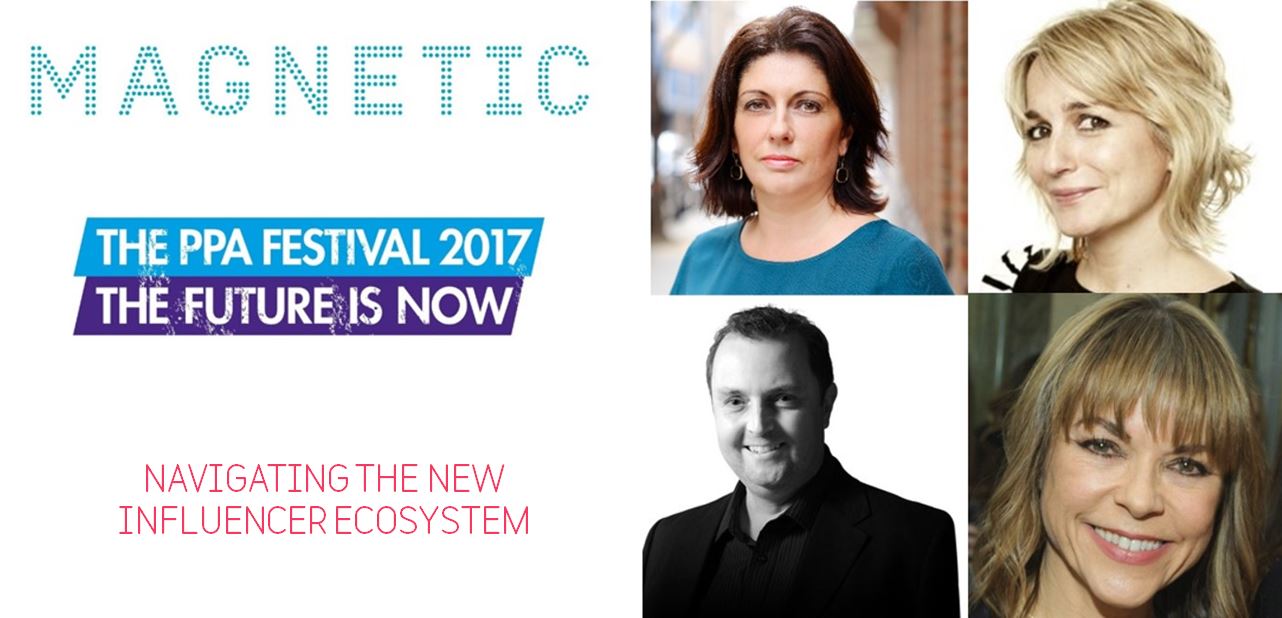At the PPA Festival recently, editors from the world of cars, entertainment and beauty discussed the changing nature of influencers, alongside some new research from Magnetic.
Anna Sampson, Magnetic’s head of insight, shared the latest findings that compare influencers on social platforms to the impact of editors and journalists at trusted magazine brands.
The research covers three sectors: fashion, beauty, and automotive. She described how the influencer landscape is evolving, and the importance of understanding it at a time when 84% of marketing professionals expect to invest more in influencer marketing in the near future.

The research looks at audience reach and engagement, in terms of factors such as likes and retweets. It shows that, in fashion and beauty, the majority of content on social platforms and blogs is created by consumers. Magazines produce less content but match the reach of influencers. The findings are similar in beauty, but magazine brands create more content and have built a bigger reach than influencers.
Greater engagement between consumers and content created by magazines is explained by the high interaction levels consumers have with posts created by professional publishers. In fashion, magazines achieve 8 interactions per post, compared to 2 per post for bloggers, the ratio is 4 to 2 in beauty. “Magazines are achieving an engaged and relevant reach,” said Sampson.
Motoring has its own unique nature, distinguished by people flocking to magazines’ forums to post. Of the top 100 posts by reach, 80% are located on magazine brand forums, (Autocar and Pistonheads).
Sampson said: “We were delighted to discover not only engaged consumers but that relevant reach is easier to achieve in magazine passion environments.”
For more information on this research contact insight@magnetic.media
The panel:
Sue Todd then kicked off the panel session, raising issues including the type of content that resonates with audiences, limits to influencer engagement with audiences, and the role of Instagram and its combination with magazines.

Steve Fowler, editor-in-chief, AutoExpress & Carbuyer: “We invest money in training to understand the car market and cars. I’d ask if a blogger has got that integrity and expertise or have they taken the information from elsewhere? In motoring, the most important things are access and very few [automotive companies] will lend a car to people without a background on them. It’s about who you trust, background and authority over years. But what we do a lot of is curating content given to us by readers, car owners, that we then put in a format they can use.”

Justine Southall, managing director, fashion and beauty, Time Inc.: “I find the idea that we’ve been hijacked as influencers deeply irritating. But we do have relationships with influencers related to something authentic and relevant to the audience. It has to be a campaign beyond whether they just put on blusher, that doesn’t convey credibility. They’re knocking on our door wanting to be involved with our brands, and we work with them like contributors.”

Lucie Cave, editor-in-chief, Heat: “Expertise is key. At Heat, we have a collective of influencers, employed because they are experts, and are passionate, and know more about the audience. Influencers in the new sense are not always experts, they’re fans on a personal journey, and don’t always have the authority and trust. There’s a problem in that scale [with influencers] has become a proxy for good and that’s not always the case. We’ve created our brands through incredible research and insight.”
The discussion closed with some strong examples of magazine brands working with influencers on successful campaigns, providing the trust and engagement that might otherwise be lacking. These included a Boots campaign across Bauer Media brands including Heat and Closer, and a Pearl Drops campaign with Time Inc.’s Look. The panel concluded that brands are in the process of reassessing the importance they have placed on influencers due to consumer demand for unbiased, trusted views.



